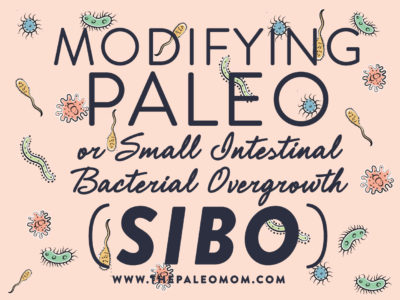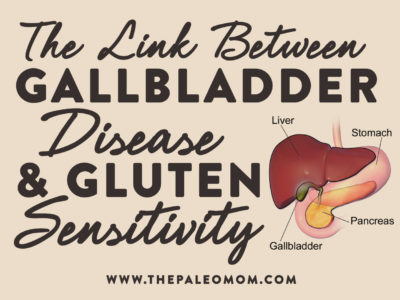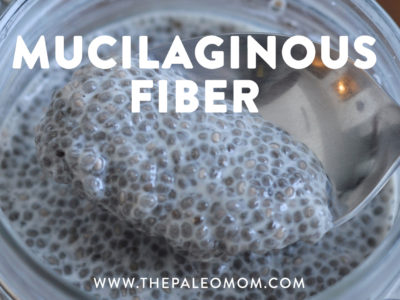Small Intestinal Bacterial Overgrowth (or SIBO) is one of those hot topics in the alternative medical community that is often misunderstood, so I thought I would take some time to explain the scientific community’s current understanding about this gastrointestinal disorder.
Table of Contents[Hide][Show]
What is the Gut Microbiota?
The gut is a biological niche, home to a diverse array of microbes that influence nearly all aspects of human biology through their interactions our bodies. Each of our guts contains approximately 400 to 1,500 different species of microorganisms that are well-adapted to survive in our gastrointestinal tracts (with about 35,000 species total for all humankind), although about 99 percent of the microorganisms come from thirty to forty species of bacteria. Our guts are inhabited by other microorganisms besides bacteria, including archaea (similar to bacteria), viruses, and single-cell eukaryotes (like yeast). In fact, it is estimated that there are three to ten times as many microorganisms living in our guts as there are total number of cells in the entire human body! These microorganisms are collectively referred to as our gut microbiota and we depend on them for health and survival. (While the term microbiota was originally coined to reference bacteria only, over time it has supplanted the more general term microflora; as such, the term gut microbiota now includes all other types of microorganisms living within the gut environment, like yeast and archaea, in addition to bacteria. The term gut microbiome refers to the collective genome of the gut microbiota, and is often erroneously used interchangeably with gut microbiota.)
Our gut microbiota performs many different essential functions that help us to stay healthy. These include vitamin production, detoxification, regulation of cholesterol metabolism, providing resistance to pathogens, immune regulation, neurotransmitter regulation, regulation of gene expression, and more!
Bacteria actually live in our entire digestive tract, from our mouth to our colon—not just in the large intestine, as you may have thought. The number of bacteria does, however, vary significantly, generally increasing progressively down the gastrointestinal tract. For example, there are only between ten and a thousand bacteria per gram of material (the stuff you are digesting) in the stomach and the duodenum (the first part of the small intestine). The second and third segments of the small intestine (the jejunum and the ileum, respectively) contain between ten thousand and ten million bacteria per gram of material. The colon contains between a hundred billion and a trillion (!) bacteria per gram of material.
Gut dysbiosis is a general term that refers to any abnormality in our gut microbiota. This includes too many or too few microorganisms growing in the various sections of the gastrointestinal tract, the wrong kinds of microorganisms or the wrong balance between the different populations of microorganisms, and microorganisms in the wrong place. Any of these situations can have profound impacts on our digestion and the modulation of our immune systems.
What is SIBO?
The most common form of gut dysbiosis is overgrowth of bacteria or yeast in the small intestine. This is referred to as small intestinal bacterial overgrowth, or SIBO. (This term does apply to yeast overgrowth, but bacterial overgrowths are actually far more common.) Now believed to be the cause of irritable bowel syndrome (or at least some forms of IBS, which is probably a collection of disorders that have yet to be sorted out), there is also a high prevalence of SIBO in every autoimmune disease in which the presence of SIBO has been evaluated. Very importantly, overgrowth of bacteria in the small intestine can be a direct cause of a leaky gut.
In a “normal” state, bacteria are predominantly found in our large intestine, with far fewer existing in the small intestine. These bacteria (as well as some species of yeast) are what make up our gastrointestinal microbiota, which is responsible for helping us to digest our foods and maintaining a healthy gut-brain axis. In SIBO, bacteria of the large intestine become overgrown and invade the small intestine. This overgrowth can cause the following gastrointestinal symptoms:
- Bloating
- Abdominal pain & cramping
- Gas
- Diarrhea
- Constipation
- Heartburn
- Nausea
If someone has SIBO, a combination of these symptoms will be present, regular, and persistent for three months or longer (and because of these symptoms, in the conventional world, SIBO is often mistaken for IBS). If we experience one or more of these symptoms every once in a while, we are likely not experiencing SIBO.
Apart from the obvious uncomfortable symptoms associated with this condition, there are other physiological consequences to untreated SIBO. In fact, SIBO has been associated with many other conditions and diseases, including:
- Celiac disease, Crohn’s disease, and other gastrointestinal conditions
- Blood sugar dysregulation and type 2 diabetes
- Fibromyalgia, rheumatoid arthritis, and other autoimmune diseases
- Thyroid disease
- Weight problems
…and an incredibly long list of more conditions!! There is an exhaustive list here. There are many proposed mechanisms for this relationship, including gastrointestinal permeability (or “leaky gut,” see What Is Leaky Gut?) and subsequent nutrient malabsorption. We know that nutrient absorption is hugely affected, because the small intestine is the site of this process! Depending on the type(s) of bacteria that are overgrown, the consequences vary. For example, the overgrown bacteria may preferentially consume iron and vitamin B12, causing anemia, or they could decrease fat absorption by de-conjugating bile leading to deficiencies of vitamins A & D and causing steatorrhea (fatty stools).
What Causes SIBO?
Researchers are still trying to understand exactly what causes SIBO. From a structural perspective, it is believed that SIBO is a result of changes in the motility of the intestines, obstruction in the small intestine, and/or pockets of small intestine that retain fluids and could be a breeding site for bacteria (these are called diverticuli). However, there is evidence that many factors, including lifestyle and medical history, can contribute to the onset and severity. These factors include:
- Food poisoning
- Chronic pain reliever (i.e., NSAIDs like Advil) use
- Chronic antibiotic use
- Consuming a standard American diet
If any of these applies to you, you don’t need to fret! None of the above is a guarantee that we will develop SIBO, and appropriate management with an anti-inflammatory, nutrient-dense diet that is especially rich in fibrous vegetables is one of the best ways to prevent this condition!
How Do We Test for SIBO?
Since SIBO was only described in the late 1990s, the system for testing and diagnosis is still being refined. However, more reliable tests have been developed in the past few years that are worth describing here.
Amongst SIBO experts, the most commonly used test is called the hydrogen breath test. This test is designed around the concept that the overgrown bacteria emit one of two kinds of gas (hydrogen or methane), which is absorbed into the blood stream and then excrete through the lungs. To prepare for the test, patients are asked to follow a strict diet for a day beforehand, then they must do an overnight fast. Immediately before the test, the patients will consume a drink that is very rich in sugars that the potential bacteria would consume for fuel, causing an increase in growth/metabolism (and thus an increase in the amount of gas produced). Then, the patients collect many breath samples over the course of three hours.
When the results are returned from the lab, someone with SIBO may have an excess amount of hydrogen gas, methane gas, or a combination of both; these results help medical practitioners determine the appropriate course of treatment (since hyrdoren-producing microorganisms respond differently to different treatment options than methane producers). At this point, however, there is no universal standard for the diagnostic criteria for SIBO; for this reason, it’s important to work with a well-qualified practitioner who specializes in gastrointestinal concerns if you are concerned about digestive health. Likewise, it’s important to note that SIBO cannot be diagnosed based on symptoms alone.
How Is SIBO Treated?
SIBO is treating using a variety of methods, usually in combination. First and foremost, the amount of bacteria in the small intestine needs to be reduced. This can be done using a specific type and dose of antibiotics or with an extensive herbal protocol; which type of treatment is appropriate is determined by a physician and is based on severity of the SIBO, type of overgrowth, and patient preference. Note that some types of bacteria respond better to antibiotics, like rifaximin, while others respond better to herbal protocols, like monolaurin. This is why working with a practitioner who is familiar with all of the options is so important.
In addition to the pharmaceutical and/or herbal treatment, people with SIBO are often prescribed one of a few very specific diets. In recent years, a combination of the Specific Carbohydrate Diet (SCD) and Low FODMAP Diet are most commonly used, but the GAPS (Gut and Psychology Syndrome) diet(see Gut and Psychology Syndrome) has also been used in the past. The goal of following this combination, which emphasizes low fiber and abstaining from starches, is to starve the bacteria in the small intestine and heal the damaged gut lining. The general approach to these diets, which are very easy to assimilate to a Paleo lifestyle, is to eliminate any dietary sugars that are not monosaccharides. Monosaccharides are simple sugars like glucose and fructose and are the most easily-absorbed in the digestive tract. More complex sugar molecules like sucrose (i.e., table sugar, which is a disaccharide or two-molecule sugar) and starches have to be broken down into monosaccharides before they can be absorbed. This means that the sugar takes longer to be digested, which means it travels farther down the digestive tract before being completely absorbed, so some of it reaches the abnormal bacteria growing in the small intestine and provides a food source for them.
The following table summarizes the GAPS/SCD approach to selecting vegetables and fruit. * indicates foods that are also high FODMAP and would be additionally eliminated if following a combined approach.
|
Okay
|
Avoid
|
|
Artichoke, French *
|
Arrowroot
|
|
Avocados *
|
Artichoke (Jerusalem)
|
|
Ripe Bananas *
|
Bitter/Black Gourd
|
|
Beets *
|
Green Bananas
|
|
Carrots
|
Chestnuts
|
|
Celeriac (Celery Root)
|
Jicama
|
|
Ginger root
|
Kohlrabi
|
|
Mushrooms *
|
Okra
|
|
Olives (preserved without sugar)
|
Parsnips
|
|
Pumpkin
|
Plantains
|
|
Rhubarb
|
Sweet Potato
|
|
Rutabaga
|
Taro
|
|
Summer Squash (like zucchini) *
|
Tapioca
|
|
Turnips
|
Yams
|
|
Winter Squash (like butternut or acorn)
|
Yucca
|
These diets also focus on consuming healing foods such as bone broth, conjugated linoleic acid found in the fats from grass-fed animals, and coconut oil. Many people may find taking Apple Cider Vinegar before meals (see The Stomach Acid Connection) is helpful.
However, it’s important to emphasize that these dietary strategies are for symptom management only and they have stark limitations when it comes to supporting long-term gut health. The current consensus with the SIBO expert community is that antimicrobial treatment is necessary to reverse SIBO. In fact, many people struggle with the symptoms of SIBO until going through multiple rounds of a treatment protocol that uses antibiotics and/or a combination of herbs.
The problem with following Low FODMAP, SCD and/or GAPS, even in conjunction with a nutrient-dense Paleo diet, is that these approaches do not provide sufficient fermentable fibers to support a healthy community of the right types of bacteria. And, probiotic bacteria themselves suppress the growth of pathogenic bacteria, so eating foods that feed the good guys is one of the absolute best strategies for keeping the growth of the bad guys at bay. Another limitation of these symptom-management diets is that they are limited in terms of vital nutrients. As discussed in The Importance of Nutrient Density and The Amazing World of Plant Phytochemicals: Why a diet rich in veggies is so important!, vegetables form the foundation of a health-promoting diet. In fact, the two diet factors with the greatest corrective influence on the gut microbiota is high insoluble fiber intake from leafy greens (see The Fiber Manifesto Part 1 of 5: What Is Fiber and Why Is it Good?, The Fiber Manifesto Part 2 of 5: The Many Types of Fiber, The Fiber Manifesto;Part 3 of 5: Soluble vs. Insoluble Fiber, and The Fiber Manifesto;Part 5 of 5: Busting the Abrasive Insoluble Fiber Myth) and high omega-3 intake (see Which Fats Should You Eat? and The Importance of Fish in Our Diets). Additionally, incorporating fermented foods can be extremely helpful (see The Health Benefits of Fermented Foods).
I also want to mention that stress management is very important for supporting gut health (see my post How Mood and Gut Health Are Linked), so incorporating some self-care routines like meditation, mindfulness, and moderate exercise could help with the success of treatment.
Correcting SIBO can take up to 2 years, and some people continue to have digestive concerns for many years after treatment. For this reason, researchers are still investigating the details of SIBO and how we can more effectively eliminate it. The take-home: if suspect or know that you have SIBO, self-treatment is not a good option. Instead, seek out a qualified healthcare provider to provide a detailed diagnosis and plan of action catered to your specific situation.
Citations
Bures J. et al. Small intestinal bacterial overgrowth syndrome. World J Gastroenterol. 2010 June 28; 16(24): 2978–2990.
Perman JA, Modler S, Barr RG, Rosenthal P. Fasting breath hydrogen concentration: normal values and clinical application. Gastroenterology. 1984;87(6):1358-63.
Pimentel M. An evidence-based treatment algorithm for IBS based on a bacterial/SIBO hypothesis: Part 2. Am J Gastroenterol. 2010;105(6):1227-30.
Rezaie A, Pimentel M, Rao SS. How to Test and Treat Small Intestinal Bacterial Overgrowth: an Evidence-Based Approach. Curr Gastroenterol Rep. 2016;18(2):8.












